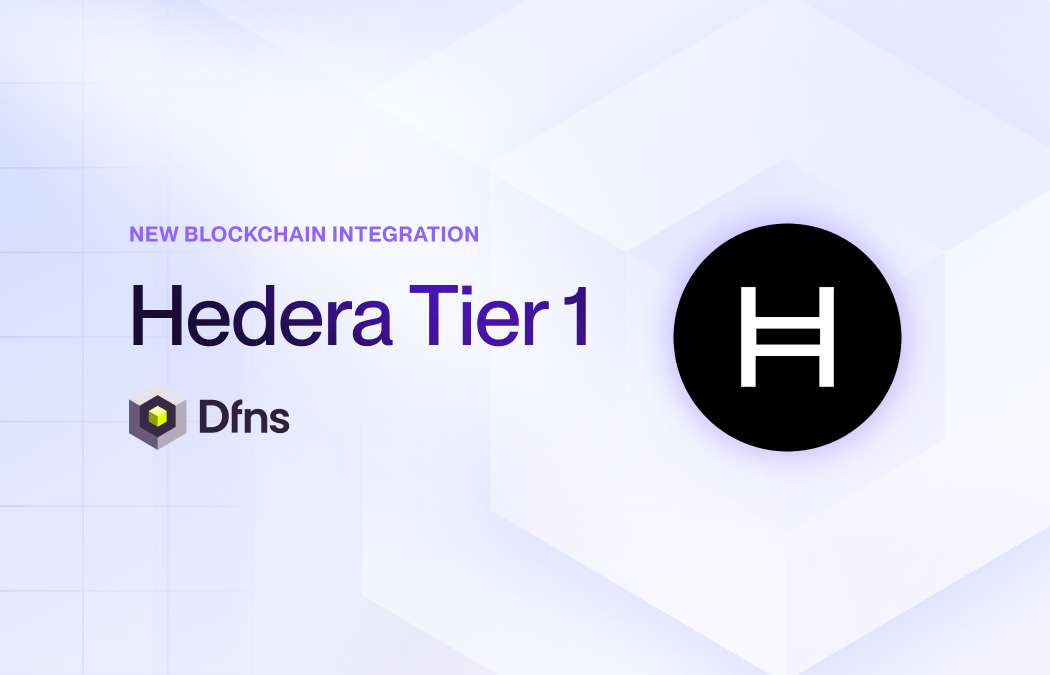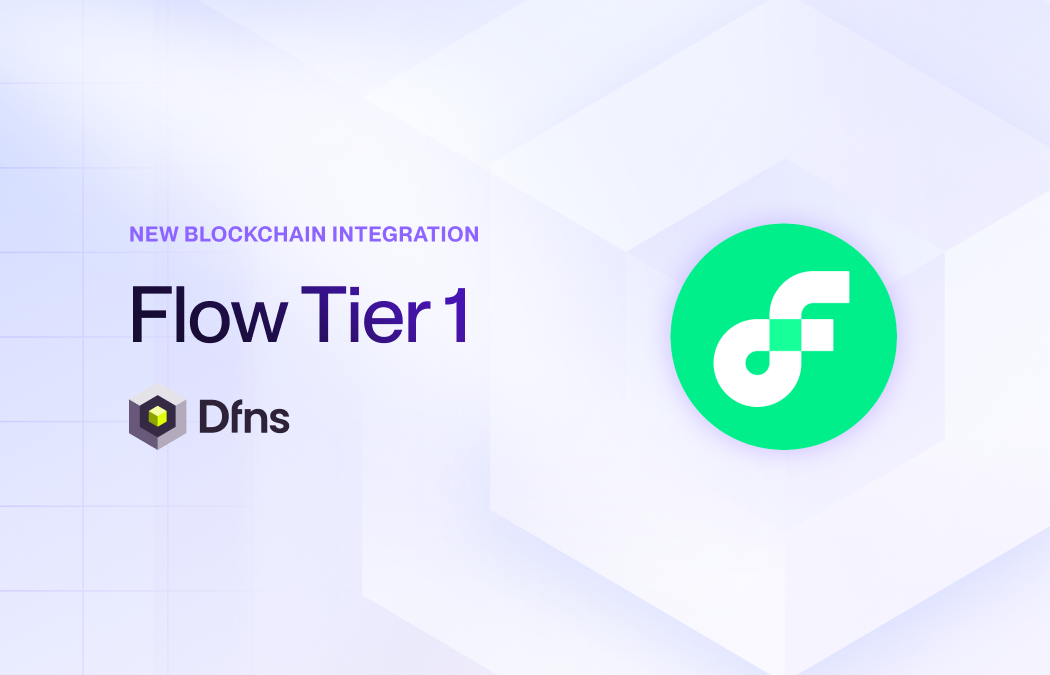
Hedera is now live as a Tier-1 blockchain on Dfns.
We’re bringing our secure wallet infrastructure to one of the fastest, most energy-efficient distributed networks in the world. With this integration, developers and institutions can now create Hedera wallets, manage HBAR and Hedera-native tokens, send and receive transfers, and tap into the full Dfns feature set to build secure, scalable applications in trading, tokenization, AI, supply chain, and more.
What is Hedera and why it stands out
Hedera doesn’t run on a traditional blockchain. Instead, it uses hashgraph, a type of directed acyclic graph (DAG), to record and verify transactions. In blockchains, transactions are bundled into blocks, processed in sequence, and competing blocks are discarded to avoid forks. In Hedera, all transaction events are kept and woven into the ledger, allowing parallel processing and eliminating wasted work.
Consensus is reached through a “gossip about gossip” protocol with virtual voting. Nodes share not only the transaction data but also when and from whom they received it. This allows the network to determine a fair consensus order without a central leader, achieving asynchronous Byzantine Fault Tolerance (aBFT), the highest level of fault tolerance for distributed systems.
What this means in practice
- No frontrunning or MEV: Transactions are fairly ordered by consensus timestamps, preventing manipulation or sandwich attacks.
- Fast, final settlement: Transactions reach deterministic finality in 3–5 seconds with low latency.
- High throughput: Thousands of TPS for general use, up to 10,000 TPS for token transfers, and scalable with more nodes.
- Extreme efficiency: ~0.0001 kWh per transaction, hundreds of thousands of times more efficient than Proof-of-Work, and fully carbon-negative.
- Predictable fees: All fees are fixed in USD and often under $0.001, regardless of network activity or token price.
Hedera also comes with:
- Token Service: High-throughput transfers without smart contract overhead.
- Optimized EVM: Run Solidity smart contracts with improved performance.
- Consensus Service: Immutable, time-stamped logs for real-time applications.
Last, Hedera is governed by the Hedera Council, up to 39 global organizations including Google, IBM, Dell, Chainlink, and Standard Bank. Each member runs a network node, participates in decision-making, and develops use cases on the network.
Tier-1 integration benefits for Hedera users
As a Tier-1 blockchain on Dfns, Hedera supports the same powerful capabilities we offer across our multichain ecosystem:
- Automatic asset recognition: Instantly detect HBAR and Hedera tokens with live balance updates.
- Full transaction history: Track all inbound and outbound activity for clear audit trails.
- Secure transaction handling: Create, sign, and submit transactions directly via the Dfns API or dashboard.
- Real-time monitoring: Use webhooks to trigger actions on balance changes, token transfers, or other events.
From instant settlement payments to tokenized assets, AI pipelines, and supply chain systems that update in seconds, Hedera and Dfns give teams the speed, security, and reliability to build with confidence.
Start building today: https://app.dfns.io/get-started






